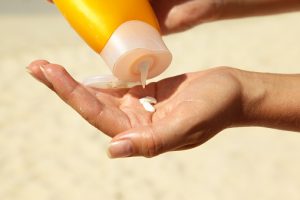
In addition, the costs of the sunscreens varied greatly, with some of the brands priced at 3,000 percent more than others without offering any greater protection.
Study author Dr. Steve Xu said, “The results were surprising in some ways. But, there are some important caveats. The definition of a ‘sunscreen’ has broadened a lot. Sunscreens are no longer just bright blue bottles thrown in beach bags.”
“This is probably why so many of the products that didn’t meet AAD guidelines were because of a lack of water or sweat resistance. If you’re going to be exposed to water [at a pool or beach] or high ambient temperature leading to significant perspiration, then making sure your sunscreen is water- or sweat-resistant is very important,” Xu added.
The FDA regulates sunscreens as over-the-counter drugs and requires companies to have detailed labels about sun protection. The AAD recommends people opt for sunscreens that provide broad spectrum protection against UVA and UVB rays.
Sunscreens should provide an overall “sun protection factor” (SPF) of at least 30 to block out 97 percent of the sun’s rays.
Dr. Robert Kirsner, chairman of the department of dermatology and cutaneous surgery at the University of Miami Miller School of Medicine, added, “Consumers would be better served to choose the best cosmetic ‘elegance’ among those sunscreens that meet AAD guidelines.” On the other hand, Kirsner suggests wearing “imperfect” sunscreen is better than wearing none at all. Frequently applying sunscreen is also essential in protecting yourself against the sun’s harmful rays.
Dr. Mary Chang, a clinical professor of dermatology at the University of Connecticut School of Medicine, mentioned other factors consumers should pay attention to when choosing sunscreen. These factors included fragrance-free sunscreens to minimize chemical irritation and allergic reactions, tinted screens that offer a better overall appearance, and screens that come blended with titanium and/or zinc for enhanced UV protection.
Also, read Bel Marra Health’s article: How to choose sunscreen.
Sources:
https://archderm.jamanetwork.com/article.aspx?articleid=2532615